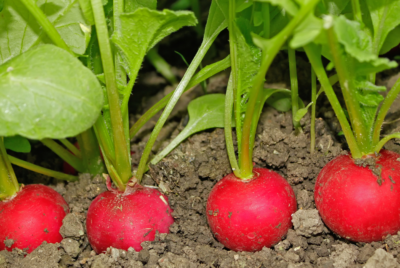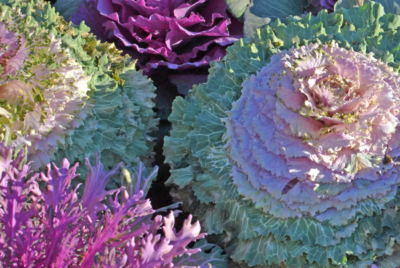Spinach Companion Plants

Spinach Companion Planting – Introduction
Hi there, fellow garden enthusiasts! Let’s dive into the world of spinach companion planting. As a seasoned gardener, I’ve experimented with various planting combinations and have seen firsthand the wonders of pairing spinach with the right buddies in the garden.
Brief overview of spinach companion planting
Spinach companion planting involves strategically pairing spinach with specific plants to enhance growth, control pests, and improve soil health. It’s a gardening practice that maximizes the benefits of each plant’s natural properties. By choosing the right companions, like strawberries and peas, gardeners can ensure their spinach thrives, while avoiding less compatible plants like potatoes and fennel, leading to a healthier, more productive garden.
Personal enthusiasm and experience
As a joyful gardener, I’ve embraced spinach companion planting with enthusiasm. Experimenting in my own garden, I’ve witnessed remarkable improvements in spinach growth and health when paired with the right plants. My journey, filled with trials and successes, has deepened my appreciation for nature’s synergies, inspiring me to share these insights and encourage others to explore the rewarding practice of companion planting.
What is Companion Planting?

Definition
Companion planting is a strategic gardening practice where different plants are grown together for mutual benefit. It’s based on the principle that certain plants, when placed in close proximity, can enhance each other’s growth, deter pests, and improve soil health. This method taps into the natural relationships between plant species, leveraging their complementary characteristics. For instance, some plants might repel pests that commonly affect their neighbors, while others may improve soil nutrients, creating a symbiotic environment. This age-old technique not only boosts garden productivity but also promotes a more sustainable and ecological approach to gardening.
Importance in gardening
Companion planting holds significant importance in gardening, offering a natural and sustainable way to enhance plant health and yield. This method reduces the need for chemical pesticides and fertilizers, as plants naturally support each other’s growth and pest resistance. It fosters biodiversity, attracting beneficial insects and promoting a balanced ecosystem. By optimizing space and resources, companion planting can lead to more efficient use of garden space. This technique also helps in soil preservation and improves the overall health of the garden, making it a crucial practice for gardeners seeking an eco-friendly, holistic approach to cultivating their plants.
Benefits of Companion Planting for Spinach
Improved growth
Companion planting significantly benefits spinach by promoting its improved growth. When paired with the right plants, spinach can thrive due to enhanced soil conditions and nutrient availability. For instance, certain companions can fix nitrogen in the soil, making it more accessible for spinach, which is a nitrogen-loving plant. This results in lusher, more vibrant spinach leaves. Additionally, the shading provided by taller companion plants can create an ideal microclimate for spinach, protecting it from harsh sun and helping to retain soil moisture. This symbiotic relationship ensures that spinach grows healthier, fuller, and faster, maximizing the yield from your garden.

Pest control
Companion planting offers effective pest control for spinach, targeting specific pests that commonly plague this leafy green. For example, planting garlic or onions near spinach can help repel aphids, a common pest that sucks sap from spinach leaves, leading to wilting and deformation. Marigolds, another excellent companion, emit a strong scent that deters nematodes and other soil-borne pests, protecting the spinach roots. Additionally, herbs like dill and cilantro attract beneficial insects like ladybugs and lacewings, which are natural predators of aphids and other harmful insects. This natural pest control method reduces the need for chemical pesticides, leading to a healthier, more organic garden environment.
Soil health
Companion planting plays a pivotal role in enhancing soil health, which is crucial for spinach’s optimal growth. Certain companion plants can improve soil structure and nutrient content, creating a more fertile environment for spinach. For example, legumes like peas and beans fix nitrogen in the soil, enriching it with this essential nutrient that spinach requires for healthy growth. Their root systems also help in aerating the soil, ensuring better water penetration and root growth for spinach.
Moreover, companion plants with different root depths optimize the use of soil nutrients and space. While spinach has relatively shallow roots, deeper-rooted companions can draw up nutrients from lower soil layers, bringing them closer to the soil surface where spinach can benefit.
Cover crops like clover can be used as living mulch, suppressing weeds, conserving soil moisture, and preventing erosion. When these plants decompose, they add organic matter to the soil, improving its fertility and structure, which is beneficial for spinach plants.
By maintaining a healthy soil ecosystem through companion planting, gardeners can ensure that spinach receives the nutrients, moisture, and root space it needs to thrive, resulting in a more productive and sustainable garden.
Best Companion Plants for Spinach

Strawberries
Delicious strawberries are considered one of the best companions for spinach for several reasons. Firstly, strawberries and spinach share a mutually beneficial relationship where they don’t compete for resources but rather complement each other. Because strawberries have a shallow root system, it allows spinach to access nutrients at a slightly deeper soil level without competition. This harmony ensures both plants can access the nutrients and water they need without hindering each other’s growth.
Secondly, strawberries act as a living mulch, spreading out to cover the ground. This coverage helps to keep the soil moist and cool, conditions that spinach thrives in. The leaf-ecosystem created by strawberries also helps to suppress weeds that might otherwise compete with spinach for nutrients and space.
Moreover, the two plants have different harvest times, which means they won’t overcrowd each other at peak times. Spinach is often ready to harvest before strawberries, ensuring that neither plant overshadows the other.
Finally, having strawberries nearby may also help to attract beneficial pollinators to the garden. While these pollinators are drawn in for the strawberries, they can also benefit the overall health and productivity of your spinach plants. The combination of these factors makes strawberries an excellent companion.
Peas

An excellent companion plant for spinach are peas, offering a range of benefits that enhance the growth and health of both plants. Here’s why peas are a good choice:
Nitrogen Fixation: Legumes, like peas, have a symbiotic relationship with nitrogen-fixing bacteria. This means they can take nitrogen from the air and convert it into a form usable by plants. This process enriches the soil with nitrogen, a nutrient essential for spinach’s leafy growth.
Shade and Support: As peas grow taller, they can provide gentle shading to spinach, which prefers cooler temperatures. This natural shade can protect spinach from harsh midday sun, especially as the weather warms up, helping to extend its growing season.
Pest Control: The growth of peas can help deter certain pests that are attracted to spinach. Additionally, flowering peas can attract beneficial insects like ladybugs and bees, which not only aid in pollination but also help control pest populations.
Spatial Efficiency: Peas usually grow vertically, especially if provided with trellis support. This vertical growth habit allows spinach to be planted in close proximity without competing for space, making efficient use of the garden area.
Crop Rotation Benefits: Following peas with spinach in crop rotation can be beneficial. Since peas enrich the soil with nitrogen, planting spinach in the same spot in a subsequent season allows it to take advantage of these improved soil conditions.
Overall, peas and spinach make a harmonious pairing in the garden, each bringing beneficial qualities that support the other, leading to a healthier and more productive garden.
Brassicas

What are Brassicas? They include plants like broccoli, cauliflower, cabbage, and kale, are excellent companion plants for spinach for several reasons:
Shared Growing Conditions: Brassicas and spinach often thrive in similar conditions. They prefer cooler weather, making them suitable companions for spring and fall plantings. This similarity in environmental preferences ensures that they can coexist harmoniously in the same garden space.
Pest Deterrence: Some brassicas have natural pest-deterrent properties that can benefit spinach. For example, the strong scent of certain brassicas can help repel common pests like aphids and flea beetles, which might otherwise target spinach. This natural form of pest control reduces the need for chemical pesticides.
Soil Health and Nutrient Uptake: While brassicas are heavy feeders, they primarily draw different nutrients from the soil compared to spinach. This difference in nutrient requirements means they are less likely to compete with spinach for resources.
Moreover, when brassicas are done growing and their residues are left in the garden, they can contribute to soil health, benefiting subsequent spinach crops.
Spatial Arrangement: Brassicas, especially larger varieties like broccoli and cauliflower, can provide light shading for spinach, which prefers cooler temperatures and less intense sunlight. This can be particularly beneficial as the season warms up, helping to extend the spinach growing season.
Disease Prevention: Rotating spinach with brassicas in a garden plot can help prevent soil-borne diseases. Since these plants are not closely related, diseases that affect one are less likely to affect the other. This rotation contributes to a healthier garden ecosystem overall.
In summary, incorporating brassicas into a spinach companion planting scheme offers benefits like pest deterrence, improved soil health, and compatible growing conditions, all contributing to a more productive and sustainable garden.

Plants to Avoid Near Spinach
When planning a garden with spinach, it’s equally important to know which plants to avoid planting near it. Certain plants can be detrimental to spinach due to their contrasting growth requirements, tendency to attract shared pests, or competition for resources. Here are some plants to keep at a distance from spinach:
Potatoes: Potatoes and spinach are not compatible as companions. They compete for similar nutrients, particularly potassium, which can lead to nutrient deficiencies in both plants. Additionally, potatoes can attract blight and other pests that could also harm spinach.
Fennel: Fennel is known to be allelopathic, meaning it can inhibit the growth of nearby plants, including spinach, through the chemicals it releases into the soil. It’s best to plant fennel away from most other garden vegetables to avoid this negative interaction.
Corn: Corn can overshadow spinach, depriving it of essential sunlight. Moreover, corn is a heavy feeder, demanding a lot of nutrients from the soil that might otherwise benefit spinach.
Melons and Cucurbits (Cucumbers, Squash, Pumpkins): These plants have sprawling growth habits and extensive root systems that can encroach on the space and nutrients needed for spinach. They also can create too much shade, which might not be ideal for spinach, especially in its early growth stages.
Beets: Beets and spinach are both high in oxalic acid and can attract similar pests. Planting them together can increase the risk of pest problems and nutrient competition.
By avoiding these plants in close proximity to spinach, gardeners can prevent potential growth issues, reduce competition for nutrients and sunlight, and minimize the risk of pest and disease transfer. This careful planning leads to a healthier, more productive garden.
How to Arrange Your Garden for Companion Planting
Arranging your garden for successful companion planting involves strategic planning and consideration of various factors to ensure that each plant receives the necessary resources while benefiting its neighbors. Here are some layout tips for effective companion planting:
Sunlight Consideration:
Assess the sunlight needs of each plant. Arrange taller plants like tomatoes or corn on the north side of the garden to prevent them from casting shadows on shorter, sun-loving plants like spinach. Similarly, shade-tolerant plants can be placed in the shadow of taller crops.

Spacing and Plant Heights:
Proper spacing is crucial. Ensure each plant has enough room to grow without overcrowding, which can lead to competition for nutrients, water, and light. Consider both the height and root spread of each plant. Taller plants can provide beneficial shade for lower-growing, shade-tolerant plants.
Grouping by Needs:
Group plants with similar water, light, and soil needs together. This simplifies maintenance and ensures that each plant gets its required conditions without negatively affecting its companions.
Use of Vertical Space:
Implement vertical gardening for plants like peas and beans. This maximizes garden space and can provide shade or support for lower-growing plants, like spinach.
Interplanting and Succession Planting:
Practice interplanting by growing fast-maturing crops (like lettuce or radishes) between slower-growing ones (like broccoli). This makes full use of the garden space and keeps the soil covered. Succession planting, where crops are planted at intervals, can ensure a continuous harvest and reduce pest and disease build-up.
Creating Borders and Paths:
Consider planting beneficial herbs and flowers as borders around vegetable patches. These can attract pollinators and beneficial insects or repel pests. Also, ensure there are accessible paths for maintenance without stepping on the growing plants.
Soil Health Maintenance:
Rotate crops each year to prevent soil depletion and reduce disease and pest buildup. Different plants have varying nutrient requirements and pest/disease associations, so rotation helps in maintaining soil health and garden balance.
Accessibility and Aesthetics:
Arrange your garden so that it’s not only functional but also aesthetically pleasing and easy to access for weeding, harvesting, and caring for the plants.
By considering these layout tips, gardeners can create a harmonious and productive companion planting garden that maximizes the benefits of each plant, maintains soil health, and enhances overall garden biodiversity.
Tips for Successful Companion Planting
Successful companion planting requires careful planning and consideration of various factors. Here are some key tips to ensure your companion planting efforts are fruitful:

Understand Plant Relationships:
Research which plants are beneficial to each other and which ones should be kept apart. Understand their needs in terms of sunlight, water, and nutrients to create a compatible garden layout.
Consider Timing and Seasonality:
Pay attention to the growing seasons of your plants. Some plants thrive in cooler weather, while others prefer warmth. Timing your planting correctly ensures that companions benefit each other at the right time.
Soil Preparation:
Prepare your soil based on the needs of your plants. Some plants prefer rich, loamy soil, while others thrive in slightly acidic or sandy soil. Adding organic matter like compost can improve soil health and benefit all plants.
Balanced Watering Practices:
Different plants have varying watering needs. Group plants with similar moisture requirements together to avoid over- or under-watering. Use mulch to retain soil moisture and regulate soil temperature.
Pest and Disease Management:
Choose companion plants that help control pests naturally. For example, marigolds can deter nematodes, and herbs like basil can repel flies and mosquitoes. Also, rotating crops each year helps prevent the build-up of soil-borne diseases.
Pollination Partners:
If you’re growing fruit or vegetables that require pollination, include plants that attract bees, butterflies, and other pollinating insects. Flowers like lavender and zinnias are great for attracting pollinators.

Spacing and Crowding:
Ensure each plant has enough space to grow without being overcrowded. This reduces competition for nutrients and light and allows for adequate air circulation, reducing the risk of disease.
Utilize Vertical Space:
Use trellises, stakes, and cages for climbing and vining plants. This not only saves space but can also provide shade or support for other plants.
Keep Records:
Maintain a garden journal to track what plant combinations work well and which ones do not. This will be a valuable resource for planning future gardens.
Be Patient and Observant:
Companion planting is as much an art as it is a science. Observe your garden regularly and be patient. It may take some time to see the full benefits of your companion planting efforts.
By following these tips, you can create a thriving, productive, and harmonious garden ecosystem through companion planting.
Common Mistakes to Avoid
When it comes to spinach companion planting, there are specific common mistakes that gardeners should avoid to ensure the health and productivity of their plants:
Planting Spinach Near Allelopathic Plants:
Avoid planting spinach near allelopathic plants like fennel, which can inhibit its growth by releasing growth-stunting chemicals into the soil.

Ignoring Crop Rotation:
Repeating spinach or its relatives in the same spot year after year can deplete soil nutrients and increase the risk of soil-borne diseases. Rotate spinach with non-related crops each season.
Overcrowding Spinach:
Spinach needs room to grow. Planting it too close to other plants, even its companions, can lead to competition for light, nutrients, and water, stunting its growth.
Planting Spinach with Heavy Feeders:
Avoid planting spinach alongside heavy feeders like corn or cucurbits, as they can monopolize nutrients and water, leaving little for the spinach.
Neglecting Soil Preparation:
Spinach thrives in well-draining, nutrient-rich soil. Neglecting soil preparation can lead to poor growth. Regularly amend the soil with compost or organic matter to maintain its fertility.
Overlooking Watering Needs:
Spinach requires consistent moisture but doesn’t tolerate waterlogged soil. Inconsistent watering can stress the plants and make them prone to diseases like downy mildew.
Planting Spinach in Excessive Shade:
While spinach prefers cooler temperatures, too much shade, especially from larger companion plants, can impede its growth. Ensure it receives adequate sunlight.
Ignoring Pest Management:
Even with companion planting, spinach can attract pests like leaf miners and aphids. Regularly inspect plants and employ natural pest control methods as needed.
Failing to Harvest Timely:
Spinach can bolt (flower and go to seed) quickly, especially in warm weather. Delayed harvesting can result in bitter-tasting leaves. Harvest spinach leaves regularly to encourage new growth.
Not Considering Seasonal Variations:
Spinach is a cool-season crop. Planting it during the hot months, even with suitable companions, can lead to poor germination and growth.
By avoiding these mistakes, gardeners can ensure a successful and productive spinach companion planting experience.
Personal Success Stories

My experience with companion planting spinach
My journey with companion planting spinach has been a rewarding learning experience. Initially, I experimented with different companions like peas and strawberries, observing how they positively influenced the spinach’s growth and health. The peas enriched the soil with nitrogen, while the strawberries provided a mutual shading effect. This not only enhanced the spinach’s flavor and yield but also minimized pest issues. Over time, I’ve fine-tuned my approach, learning from each season, and now enjoy lush, healthy spinach crops that are a testament to the power of companion planting.
Conclusion
Recap of key points
Encouragement to try companion planting
In conclusion, companion planting with spinach offers numerous benefits, including improved growth, pest control, and soil health. Pairing spinach with compatible plants like peas and strawberries can significantly enhance its development while reducing the need for chemical interventions. The key is understanding each plant’s requirements and interactions. My personal experience has shown how effective this method can be in creating a thriving, sustainable garden. I encourage all garden enthusiasts, whether novice or experienced, to try companion planting. It’s not only a practical approach to gardening but also a deeply satisfying way to connect with nature and nurture a more productive and healthy garden.
FAQs
What are the best companion plants for spinach?
The best companions for spinach include peas, which enrich the soil with nitrogen, and strawberries, which provide beneficial shading. Other good companions are brassicas like broccoli and cauliflower, which have similar water and soil requirements.
Can spinach and tomatoes be planted together?
It’s not recommended to plant spinach and tomatoes together. Tomatoes are heavy feeders and can deprive spinach of necessary nutrients. Additionally, tomatoes prefer warmer conditions, which might not be ideal for spinach.
How does companion planting help in pest control for spinach?
Companion planting helps control pests naturally. For example, planting garlic or onions near spinach can repel aphids, and herbs like dill attract beneficial insects that prey on spinach pests.
When is the best time to plant spinach in a companion planting setup?
The best time to plant spinach is in early spring or fall, as it thrives in cooler temperatures. Ensure its companions have similar temperature preferences for optimal growth.
How much space should I leave between spinach and its companion plants?
Generally, leave about 6 to 12 inches of space between spinach and its companion plants. This spacing allows adequate room for growth and ensures that each plant has sufficient access to sunlight and nutrients.
Recipe Spinach Pancakes

Spinach pancakes are a nutritious and delicious way to enjoy greens. Here’s a simple recipe for you to try using 9 ingredients:
Ingredients
1) 1 cup fresh spinach leaves
2) 1 cup all-purpose flour
3) 1 large egg
4) 1 cup milk
5) 2 tablespoons melted butter or vegetable oil
6) 1 tablespoon sugar (optional)
7) 1 teaspoon baking powder
8) 1/2 teaspoon salt
9) Butter or oil for cooking
Instructions
Prepare the Spinach: Wash the spinach leaves thoroughly. Blanch them in boiling water for 1 minute, then plunge into ice water to stop the cooking process. Drain and squeeze out as much water as possible. Chop finely or puree in a blender.
Make the Batter: In a large mixing bowl, combine the flour, sugar (if using), baking powder, and salt. In another bowl, beat the egg with the milk and melted butter or oil. Add the wet ingredients to the dry ingredients and stir until just combined. Fold in the spinach.
Cook the Pancakes: Heat a non-stick pan or griddle over medium heat and lightly grease it with butter or oil. Pour about 1/4 cup of batter per pancake onto the pan. Cook until the edges look set and bubbles form on the surface, then flip and cook the other side until golden brown.
Serve: Serve the spinach pancakes warm with your choice of toppings, such as maple syrup, honey, fresh fruits, or yogurt.
These spinach pancakes are a great way to incorporate more vegetables into your meals, especially for kids. They’re perfect for breakfast or as a healthy snack.
Enjoy!
Companion Planting For Sunflowers
Companion Planting for Carrots
Cauliflower Companion planting





